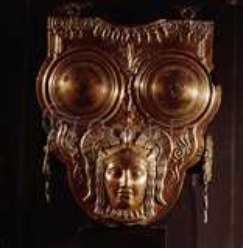 |
| French soldiers in cuirass type armour |
"Such actions as that of may 9, where several brigades lost nearly half their numbers in endavouring to rush over the 300 yards which separated us from the German litrenches "must make it clear that it is absolutely impossible for unprotected troops to pass over a zone which is sweept by machine guns."
Okazuje się, że horrendalne straty ataków na okopanego przeciwnika osłanianego karabinami maszynowymi budziły sprzeciw społeczny już w czasie I Wojny Światowej. Wpadła mi w ręce wypowiedz Arthura Conan Doyla, autora Sherlocka Holmsa na ten właśnie temat.
Arthur Conan Doyle on Armouring the WWI troops
It appear that reflection of unacceptability of horrendous loses caused by trench warfare of WW I, where offensive action on dug in and defended by machine guns enemy is just impossible and senseless is not reflection of modern times and tactics.
Here is very interesting voice of Arthur Conan Doyle author of Sherlock Holmes and his proposal to solve this impossibility.
 |
| Pectoral type antique armor similar to ACD proposition |
Co najbardziej interesujące Stwierdza, że ataki takie powinny być wstrzymane całkowicie, lub dowódcy powinni znaleźć jakąś metodę zabezpieczania żołnierzy.
 |
| Two hard and soft (British) kinds of WWI armor |
Trudno ocenić wpływ takich głosów społecznych na pojawienie się pancerzy na polach bitew I Wojny Światowej, zwłaszcza, że było to zawsze uzbrojenie ochronne o charakterze elitarnym i wyspecjalizowanym niedostępne szerokim masom piechoty.
Ale wart jest odnotowania przez samo swoje istnienie i autorstwo sławnego pisarza
 |
| German Infanterie-panzer armor 1918 Arthur Conan Doyle on Armouring the WWI troops |
Brak komentarzy:
Prześlij komentarz